Teaching children how to appropriately and safely interact with dogs is a very important step to a harmonious household.
Children can learn how to use positive, reward-based training methods, which will facilitate a better dog-kiddo bond and help ensure your kids don’t accidentally interfere with your training efforts.
Additionally, learning to train a dog teaches kids how to be compassionate educators and to interact with dogs in appropriate and positive ways. This will help build confidence for both your kiddos and your doggos!
Dog Training for Kids: Key Takeaways
- Children are at high risk of dog bites, but teaching your kids to read dog body language, educating kids on how to safely interact with dogs, and using force free training strategies can help keep them safe.
- You’ll need a few tools (including a clicker and some treats, among other things) to get your kids started with a training program, but you needn’t spend a lot of money on these items.
- With patience and practice, you should be able to teach your kids how to train your dog to perform a variety of simple tricks and behaviors, such as “Sit” and “Lay,” as well as more complicated things like “Peek-a-Boo!”
Why Is Dog Training for Kids Important?
Children and dogs can build wonderful bonds. That moment a new puppy enters the family can be one of the happiest memories for any kiddo.
However, there are some disturbing dog bite statistics from a CDC study on dog bites in the United States, especially when it comes to dogs biting children:
- In the year examined (1996 to 1997), 4.7 million Americans suffered a dog bite.
- During that year, 25 people died as a result of a dog bite or attack.
- 80% of the dog bite fatality victims in the study year were children.
In fact, according to Kids-n-K9s, dog bites were the second most frequent cause of visits to emergency rooms for children.
This illustrates the importance of keeping kids safe around canines.
Fortunately, teaching kids about dog training will do a lot to counter these statistics, along with active supervision, proper puppy socialization, and teaching children about dog body language.
It’s also important to note that training your pup will always be most successful if the whole family is involved.
Kids are naturally great dog trainers and can do a wonderful job with a bit of guidance. Teaching positive training techniques will encourage them to learn how to interact with your four-footer (and all other animals) without using any form of fear, force, pain, or intimidation.
Teaching Kids to Train Dogs: What Do You Need to Start?
You don’t need much to get started teaching your children how to train dogs in a positive, reward-based manner.
Here is a list of what you might need:
- Leash with a harness or collar — You need to ensure your dog remains safe and under your control if training outdoors, so be sure to pick up a good leash and a harness or collar.
- Clicker — Clickers are cheap (most only cost a couple of bucks), and they are easy tools for the whole family to use. But most of all, kids love using clickers and catch on to these gadgets pretty quickly.
- Treats — When your pup is learning something new, make sure that you use high-value training treats to make the payoff match your dog’s effort. I really like the ZiwiPeak in particular – they come in a variety of flavors.
- Treat pouch — A good dog treat pouch just makes it easier to keep treats at the ready during training sessions.
You may also want a few props for teaching specific behaviors and tricks, such as:
- Training mat
- Target stick
- Obstacles like hoops, jumps, tables or platforms
Dog Training for Kids: The Basics
There are a few steps to follow to get your kids ready to teach your pupper some new skills and tricks.
- Introduce the clicker to your dog and children. The clicker needs to mean something to your dog and your kiddo needs to learn how to operate the clicker. After every click, have them toss Fido a treat. Tossing (as opposed to directly handing a dog a treat) is a safer way to keep little fingers safe.
- Teach your kids what positive reinforcement means. Positive reinforcement simply means rewarding the desired behavior by clicking the clicker at the moment your pup performs the behavior (such as when her bottom hits the floor for “sit”) and then tossing a treat.
- Teach your kids how to get your pup to perform a behavior. The two primary ways to do so are by either “capturing” (waiting for the behavior to be offered) or “luring” (using a treat in their hand to guide your pup into a position). These are the two effective techniques that don’t require too many steps.
- Add in a cue word. At this point, you’ll want to pair the new behavior your dog has learned to physically do with the cue word (the word used to request the behavior).
- Cue the behavior. This is the end product where your kids (or anybody) can say the cue word and have your dog perform the desired action.
This approach is completely hands-off and it makes learning fun for both the learner and the trainer. This also teaches your children that there are no negative consequences for wrong answers, but lots of rewards for right answers.
Pro Tip: If your child is under the age of six, use the clicker “team” approach. They click and you treat, or vice versa. This way your children are always appropriately supervised and they are being fair and kind in their training methods and interactions.
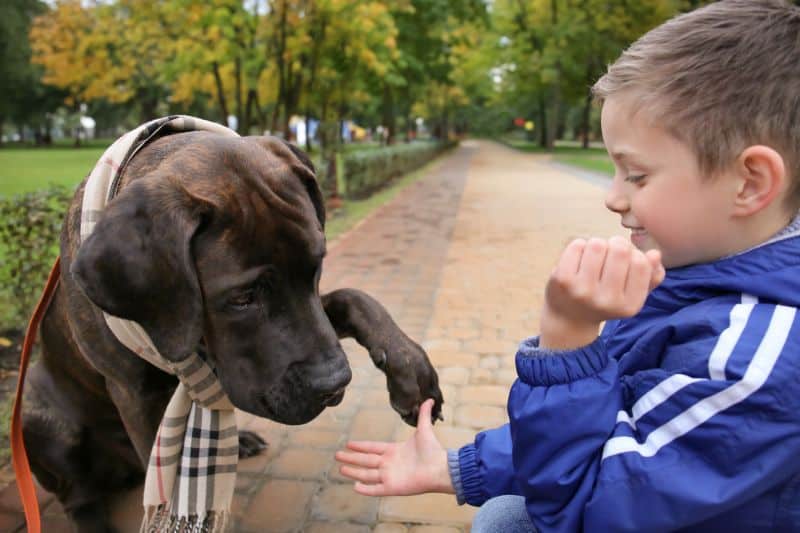
Seven Things Your Kids Can Train Your Dog to Do
There are endless ideas for what your kids can teach your dog. But let’s start with some basic foundational skills that are fun and fairly easy.
1. “Sit”
Sit is one of the first things most owners teach their puppy. It’s an easy skill for your dog to learn because it’s a natural canine behavior.
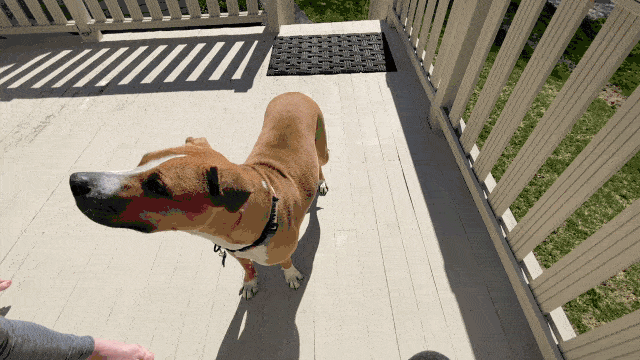
- With the clicker in hand and ready to go, simply wait for your dog to sit voluntarily. This is known as “capturing.” If they wait long enough, she’ll eventually sit.
- When your dog sits, click the clicker as quickly as possible and toss a treat away so she has to get up, get the treat, and come back. This will help her figure out that if she repeats that same sitting behavior, another click and treat will follow. It doesn’t take long for them to catch on!
- Repeat this step until she is running back from treat recovery to sit every time.
- Start adding in the cue word (“Sit!”). As she goes to sit, click the clicker and toss her a treat as soon as her bottom touches the floor.
- Your kids can now start asking your pooch to sit. Voila!
2. “Lay” or “Down”
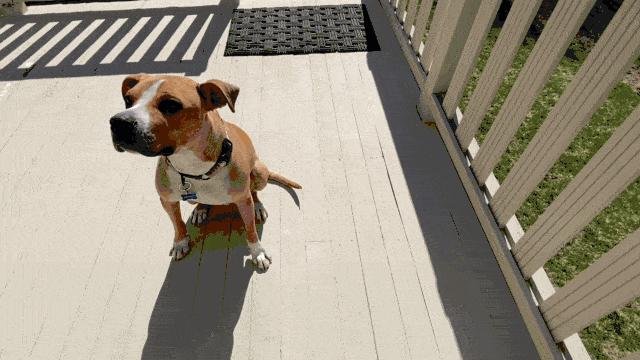
You can teach your dog to lay down in one of two ways. Either using the capturing methods discussed above, or by luring her into position.
Some dogs are less likely to choose to lie down on their own during a clicker training session, so luring her (aka using a treat to guide her into the proper position) might be the better option. If you’re working with young children, have them hold and operate the clicker while you handle the luring process.
- Have your child hold the clicker while you hold the treat between your thumb and forefinger (make sure it is safely secured). Hold the treat at your dog’s nose level.
- Move the hand with the treat slowly down towards the ground allowing your pup’s head to follow. Sometimes moving the treat slightly back or forward while lowering it is helpful.
- When she drops down and her elbows touch the floor, have your child click the clicker and toss a different treat away (continue to hold the initial treat in your hand).
- Repeat this step until she is clearly understanding what you want. Then phase the lure out slowly. Maybe use the same hand luring technique but without a treat in hand.
- Start adding in the word “Down” as she is about to drop to the ground. Pair this cue word with the action of lying down until you feel she is fully understanding that the behavior follows the request.
- Start asking for the behavior – you’ve got it!
3. “Touch”
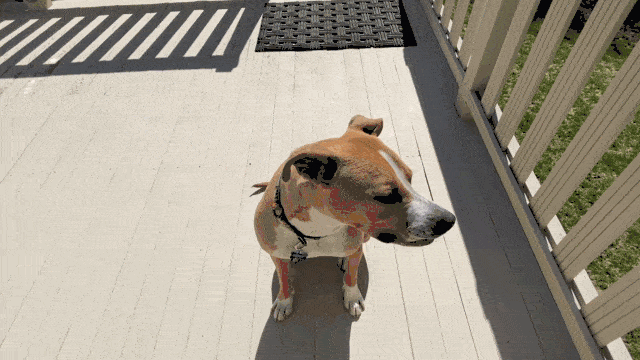
This is one of the most versatile skills that a pup can learn and it’s really easy to teach! Targeting is teaching your pup to touch her nose to your open hand (or a target stick, which may be ideal for young kids).
- With the clicker in your child’s dominant hand, have your kiddo hold his or her other hand flat and facing downward at the eye level of your pup.
- Most pups are pretty curious about human hands, as this is where treats often come from! So, your dog will likely come over, have a sniff and investigate your kid’s hand. At the moment that her nose touches your child’s palm, have your youngster click the clicker and then toss the pooch a treat.
- Repeat this step until your dog is reliably returning to your child’s hand for a nose boop.
- Your child can then start to name the behavior. As your dog approaches your kid’s hand, use the cue word “Touch” so she learns to make the association. She needs to learn that touching her nose to a hand equals a click and a treat.
- Start asking for the behavior.
4. Recall (“Come Here”)
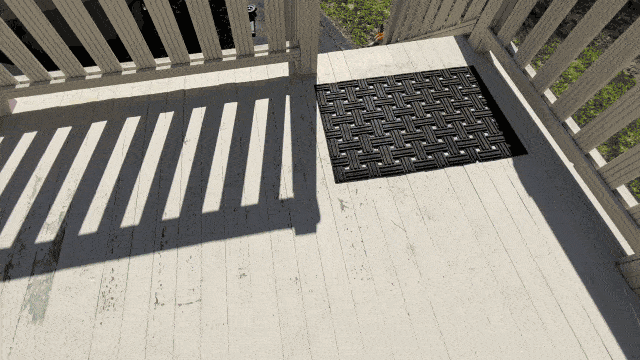
Recall is the act of calling your pupper to you. It’s the traditional “Come!” cue. Go ahead and grab your dog whistle to teach this behavior.
This is one of the most important commands to teach your dog, so let’s make sure to keep it fun:
- Blow the whistle, have your child drop treats at their feet and gently grab your pupper’s collar so she gets used to this action. Often when we call our dogs over it’s to attach a leash to their collar or harness, so now is the best time to get them used to this. Your kids should do these steps inside the house or the backyard to start where there are no other distractions. Practice several times a day for one week.
- Your children can begin to practice this in more distracting environments now, such as on walks using a long lead. But they should still practice at home, too! Again, practice several times a day for about a week.
- Replace the whistle with a word that hasn’t been used before (“come’ is usually out because it’s lost its value from over use and under value). Your kids can pick whatever fun word they like, like “Pickles” or “Rhinoceros!” – as long as you’re comfortable with using the word in public spaces. After saying the word, have your kids follow by blowing the whistle, dropping treats at their feet and gently grabbing your pup’s collar. Have them do these steps in many different environments including easy ones (home) and out and about (the park) but not in impossible situations quite yet (like playing with pup friends.) Practice several times every day for at least one week.
- Now your kids can simply use their new recall word and get rid of the whistle entirely. Have them say the recall word, drop treats at their feet and gently grab Fluffy’s collar.
Rules to follow:
- Blow the whistle for at least 3 to 5 seconds, giving your dog a chance to stop what she is doing and acclimate to the sound.
- Make sure that you always follow the whistle or recall word with several yummy treats.
- Change the value of rewards, (one treat this time, a piece of steak next time, and five treats the time after that) to always keep her motivated.
- Reach down and grab her collar, then let go while she is still eating her treats to desensitize her from having her collar handled.
5. “Spin”
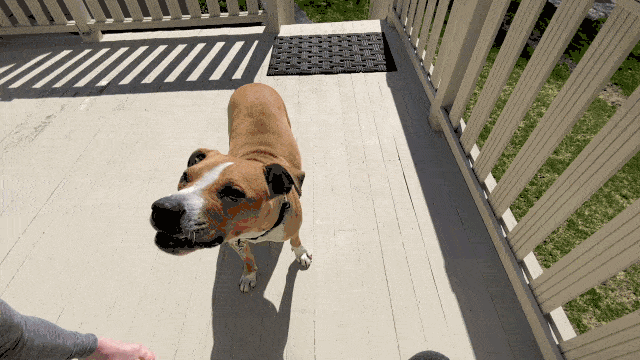
Spin is another fairly straight forward behavior that can be a lot of fun to have your children teach a dog. It’s also a trick that your kids can build on, moving from the basic behavior to more advanced versions, such as double or reverse spins.
- With the clicker in your child’s dominant hand and the lure in the other, hold the lure at nose level and slowly have her follow that lure in a full circle, like a pirouette. When she completes the circle, click the clicker and toss her a treat.
- Slowly begin to phase out the lure and use an empty hand to get your doggo to spin.
- Once your dog is consistently and accurately following your hand in a spinning motion, add in the cue word “Spin!” as she begins the turn. Click the clicker and give her a treat following the completed circle. Make your arm motions smaller and smaller each time.
- Now they’re ready to cue the spin!
6. “Take It”
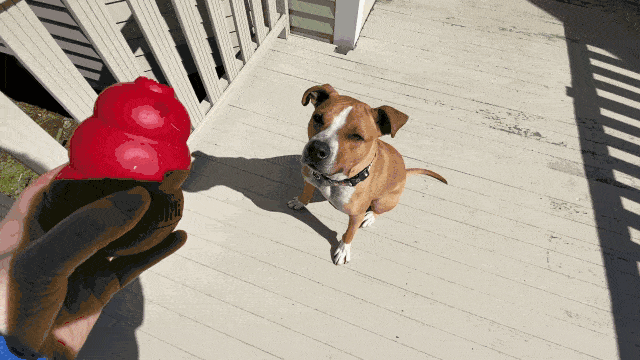
“Take it” can be one part in a series of tricks to teach a pup. For example, once your dog learns the “Take it” command (take the toy from my hand), she can then learn to “Drop it” (give the toy back to you).
You could even add in some more complexity, such as carrying the toy and depositing it in a bin. But “Take it” is a good starting point:
- With clicker in your child’s dominant hand, get one of your dog’s favorite toys and set it on the ground. Wait for your dog to pick it up in her mouth (she may or may not need some encouragement). Have your child click the clicker and give her a treat once she does.
- Repeat this several times until she is picking up the toy without hesitation. Practice in different spots, positions and even from your child’s hand.
- Start naming the behavior. As she goes to pick up the item in her mouth say “Take it!” and click your clicker and toss her a treat. Pair the word and the behavior several times.
- Now your kids are ready to cue the dog to take her toy.
7. “Peek-a-Boo”
This is a pretty fun trick and fairly easy to teach provided your pup isn’t too tall nor your kid too short!
- With the clicker in your child’s dominant hand, have your pup sit.
- Have your child turn around so that your pup is behind him or her (this might take some practice).
- As soon as your child turns around, have them lure the pup, from behind, to walk through their open legs and peek their head through to the front. Click at this point and toss the treat.
- Repeat this step until your kiddo and doggo are really confident. Then start fading the lure, which is pretty easy once your canine catches on. Start adding in the cue word “Peek-a-boo!” followed by a click and treat.
- Now your child is ready to cue the behavior and practice it until perfect!
Need some more things to teach your dog? Check out our online instructional course: 30 Things to Teach Your Dog in 30 Days.
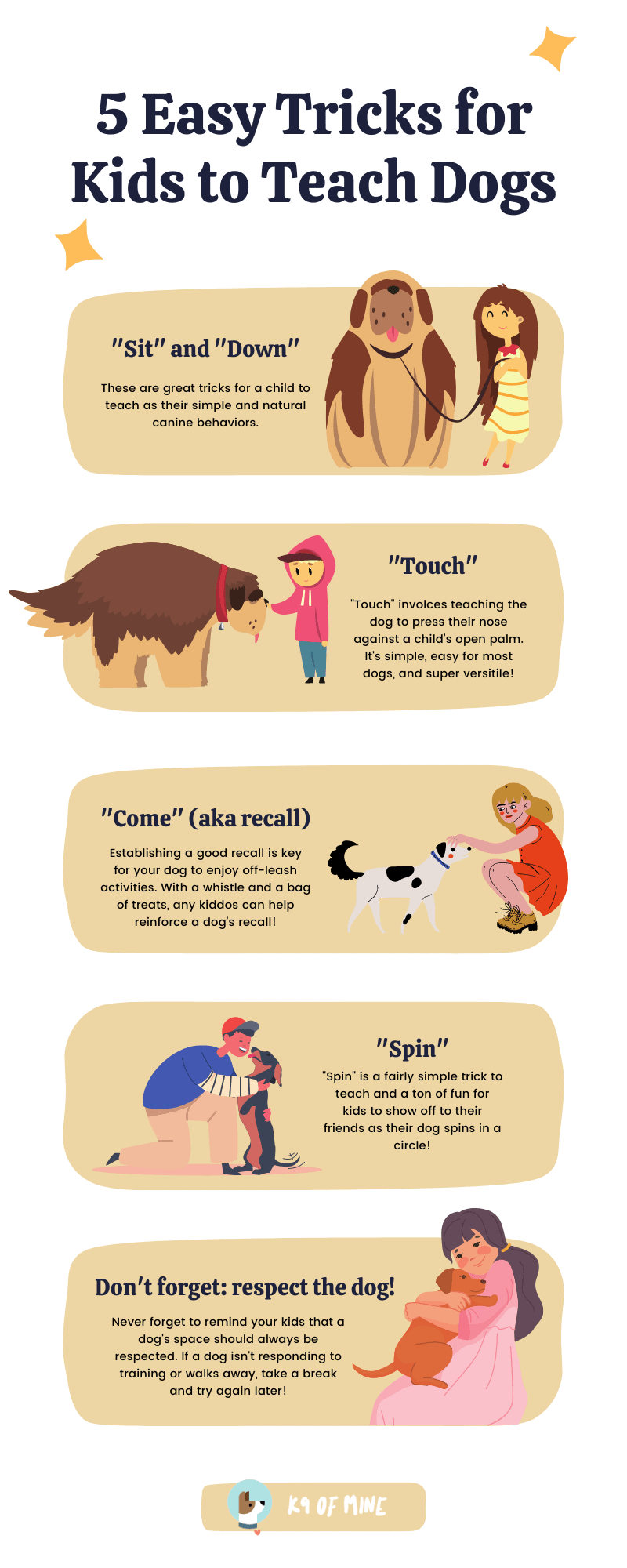
Dog Training for Kids: Tips and Tricks
The most important thing is to make sure that young children are always supervised when they are with your dog, no matter how sweet, reliable, or predictable your dog is. This is really important.
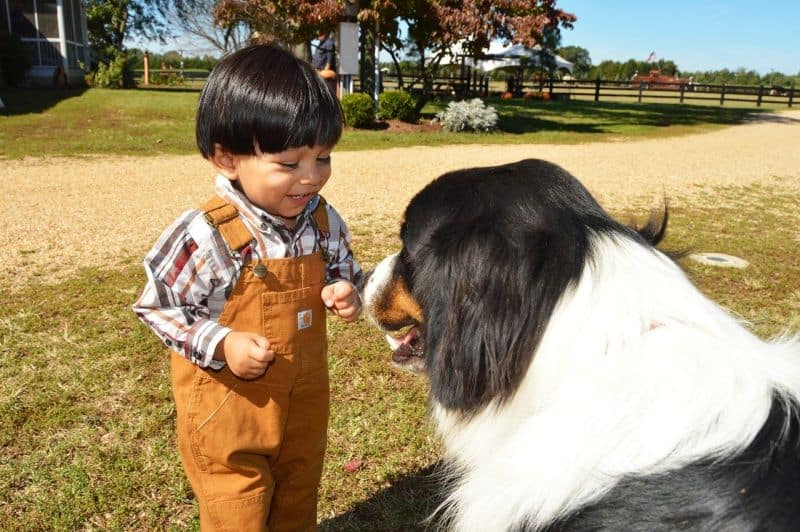
To make learning fun for your kids and your pup as well as to make sure they are successful, here are a few tips for making things run smoothly:
- Demonstrate how to use the clicker, how to toss a treat and what the behavior might look like before starting training sessions.
- Have your children practice with the clicker before your pup is present. This will help them to understand the timing and how it’s done. For example, you could have them click and toss a treat every time you say the word “abracadabra!”
- Find a place where there is plenty of space, no distractions, and where you can supervise the training sessions.
- Make sure that everyone in the family is using the same cue word. It will be confusing for Fluffy if mom says “down” and dad says “lay down” and Sally says “rest”, and… you get the picture. Decide on your cue word as a whole family!
- Teach your kids about the importance of enrichment and have them help you when preparing some fun dog puzzle games and delicious stuffed KONGS. They may even surprise you and come up with some pretty innovative ideas!
- Take walks together. Young children should never hold the leash, unless you are also holding it. This is for their safety as much as your dog’s.
- When practicing your dog’s recall command, have your child in one part of the house while you’re in another, and you can both practice calling her back and forth between rooms or in the yard.
- As your child progresses, ask them to find one new behavior or “trick” to work on every two weeks or so.
- Make sure all the kids have equal training time with your pup. However, don’t over do it. Short 2-3 minute sessions are all your dog needs at a time. You can also consider putting together a puppy family training contract with your kiddos to help them to commit to training your dog a set number of times each week.
- Teach your children about dog body language and the do’s (gentle pets when she wants them) and don’ts (don’t bother her when she is enjoying a bone) of dog interaction.
***
Kids and dogs can be wonderful companions. Children can learn just as much, if not more, from their dogs as dogs can from them!
Teaching children how to interact with other animals in a respectful and compassionate way can result in meaningful human-animal relationships for the rest of their lives.
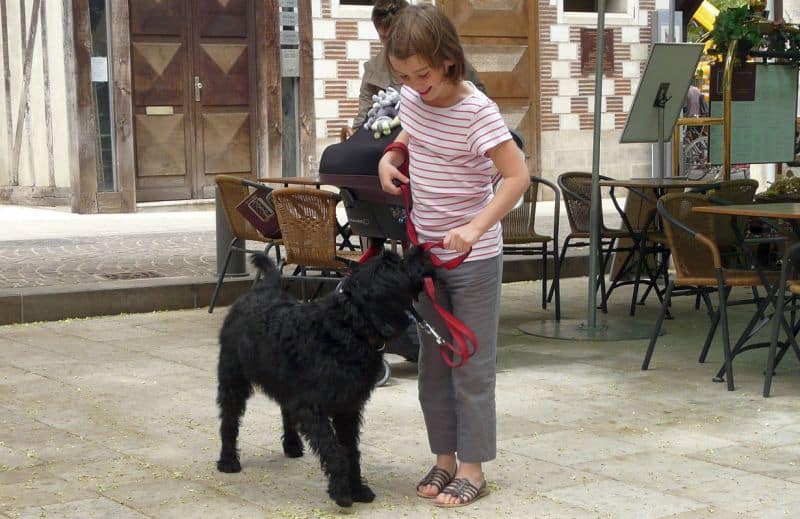
Do you have dogs and kids who are or who have grown up together? What are some of their finest training achievements? Do they like to be involved with teaching your dogs new skills? We would love to hear your stories!
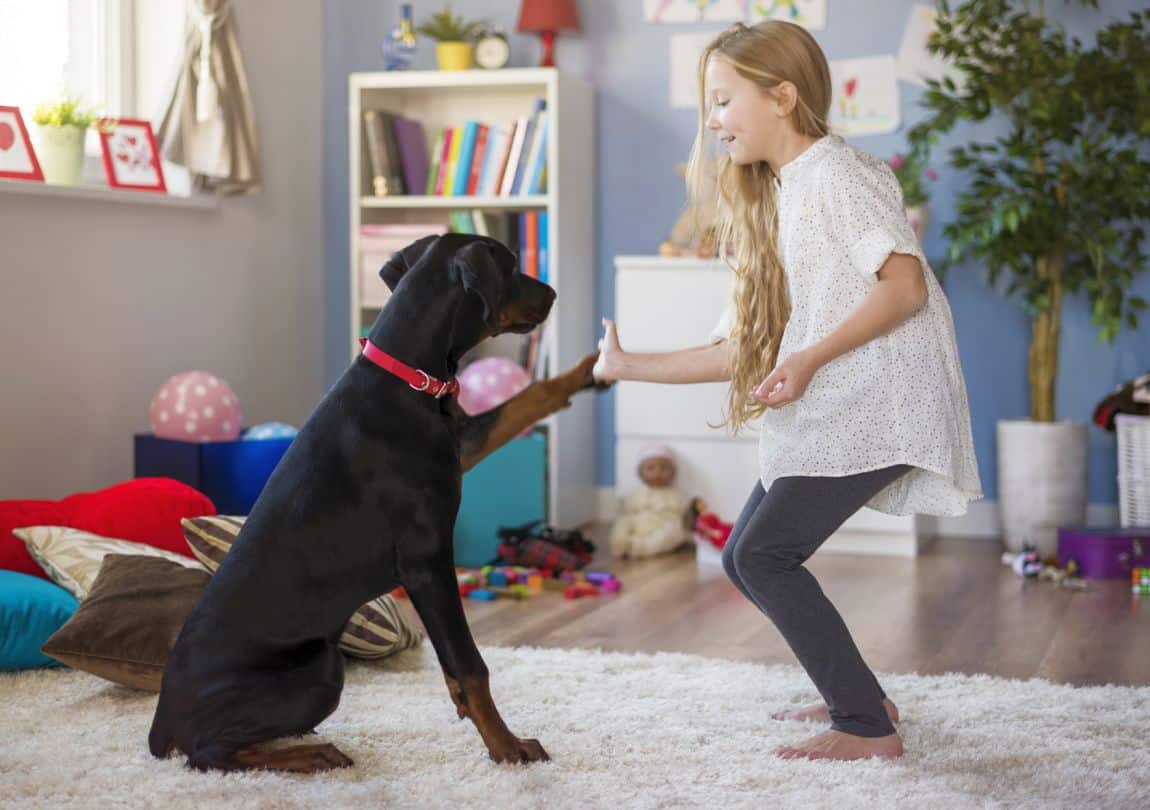

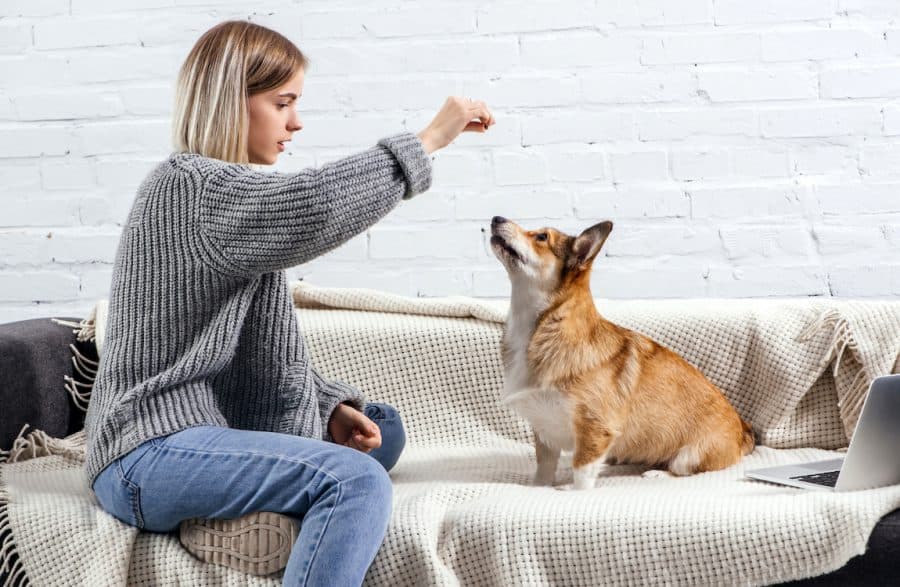


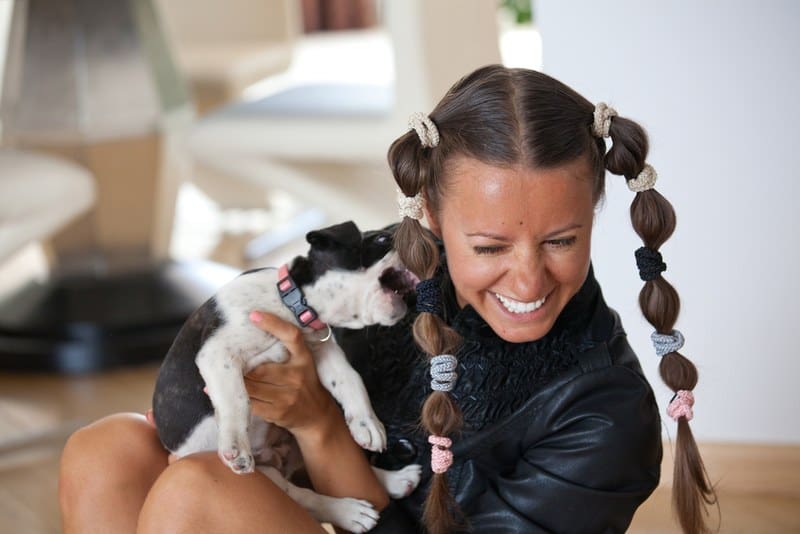

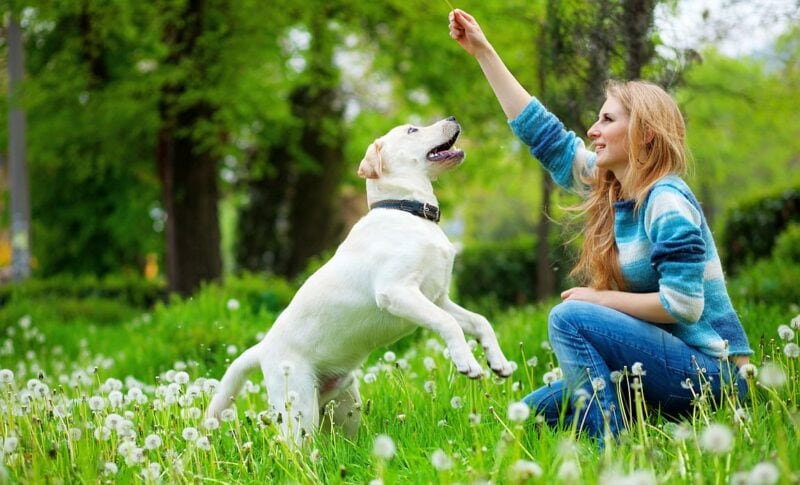
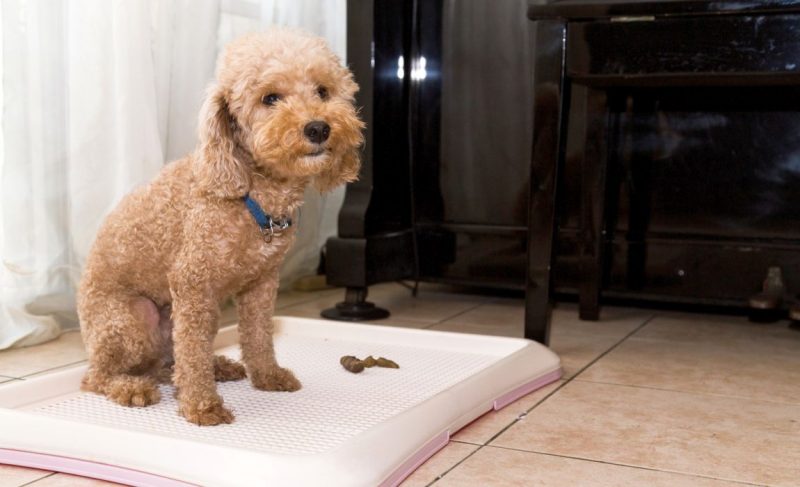
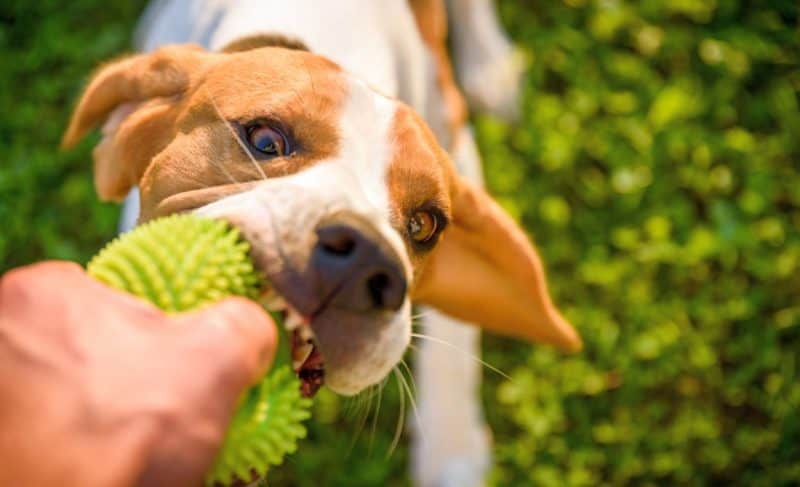
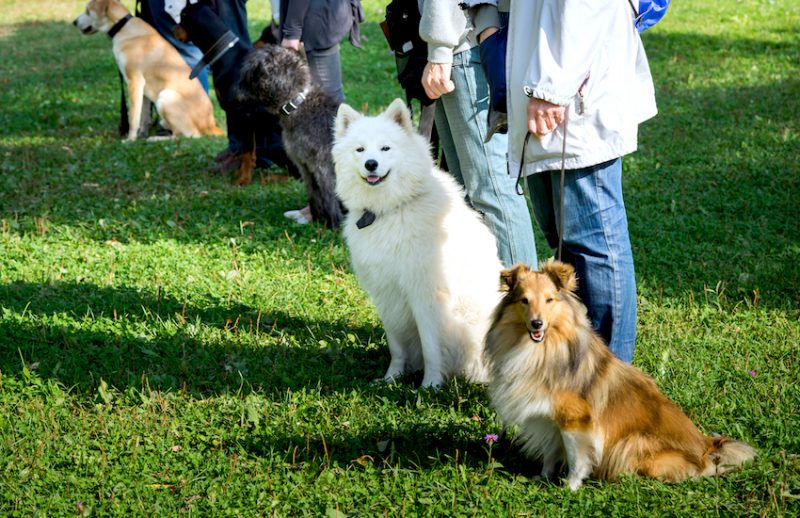
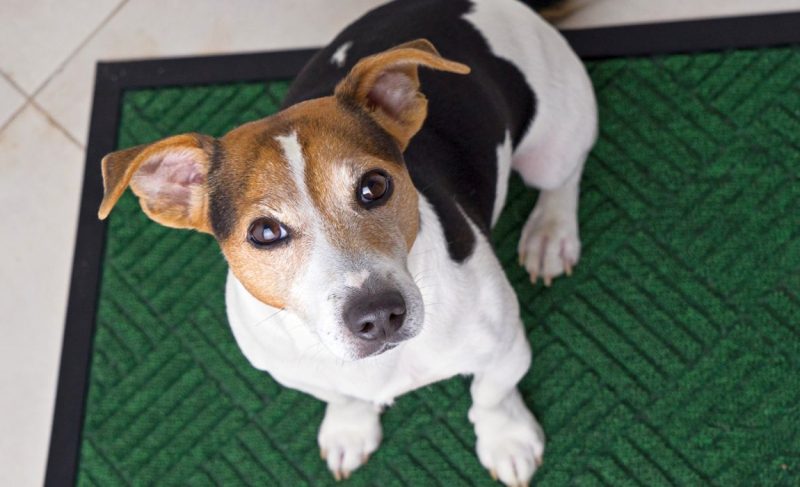

Leave a Comment